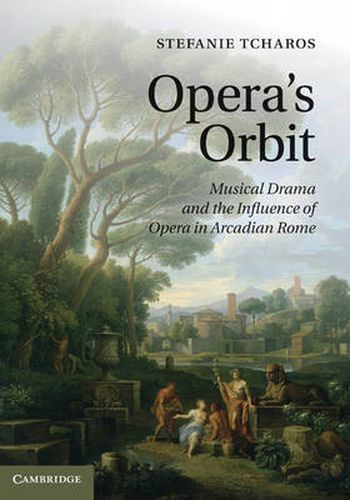Readings Newsletter
Become a Readings Member to make your shopping experience even easier.
Sign in or sign up for free!
You’re not far away from qualifying for FREE standard shipping within Australia
You’ve qualified for FREE standard shipping within Australia
The cart is loading…






Exploring the dynamic yet problematic context of musical drama in Rome, this study probes opera’s relationship to modernity during the late seventeenth and early eighteenth century. Opera instigated a range of discourses, most notably among Rome’s Academy of Arcadians, whose apprehension towards opera refracted larger aesthetic and cultural debates, and socio-political tensions. Tcharos presents a unique perspective, engaging opera as a historical force that established a sphere of influence across several genres and matrices of culture. The juxtaposition of opera against the prominent forms of the oratorio, serenata and cantata illustrates opera’s constitutive role in a trans-genre cultural matrix, where the dialogical connections between musico-dramatic forms vividly capture the historicism, nostalgia, contradiction and cultural reform that opera inspired. By illuminating other genres as reactionary sites of music and drama, Opera’s Orbit boldly reconstructs opera’s eighteenth-century critical turn.
$9.00 standard shipping within Australia
FREE standard shipping within Australia for orders over $100.00
Express & International shipping calculated at checkout
Exploring the dynamic yet problematic context of musical drama in Rome, this study probes opera’s relationship to modernity during the late seventeenth and early eighteenth century. Opera instigated a range of discourses, most notably among Rome’s Academy of Arcadians, whose apprehension towards opera refracted larger aesthetic and cultural debates, and socio-political tensions. Tcharos presents a unique perspective, engaging opera as a historical force that established a sphere of influence across several genres and matrices of culture. The juxtaposition of opera against the prominent forms of the oratorio, serenata and cantata illustrates opera’s constitutive role in a trans-genre cultural matrix, where the dialogical connections between musico-dramatic forms vividly capture the historicism, nostalgia, contradiction and cultural reform that opera inspired. By illuminating other genres as reactionary sites of music and drama, Opera’s Orbit boldly reconstructs opera’s eighteenth-century critical turn.